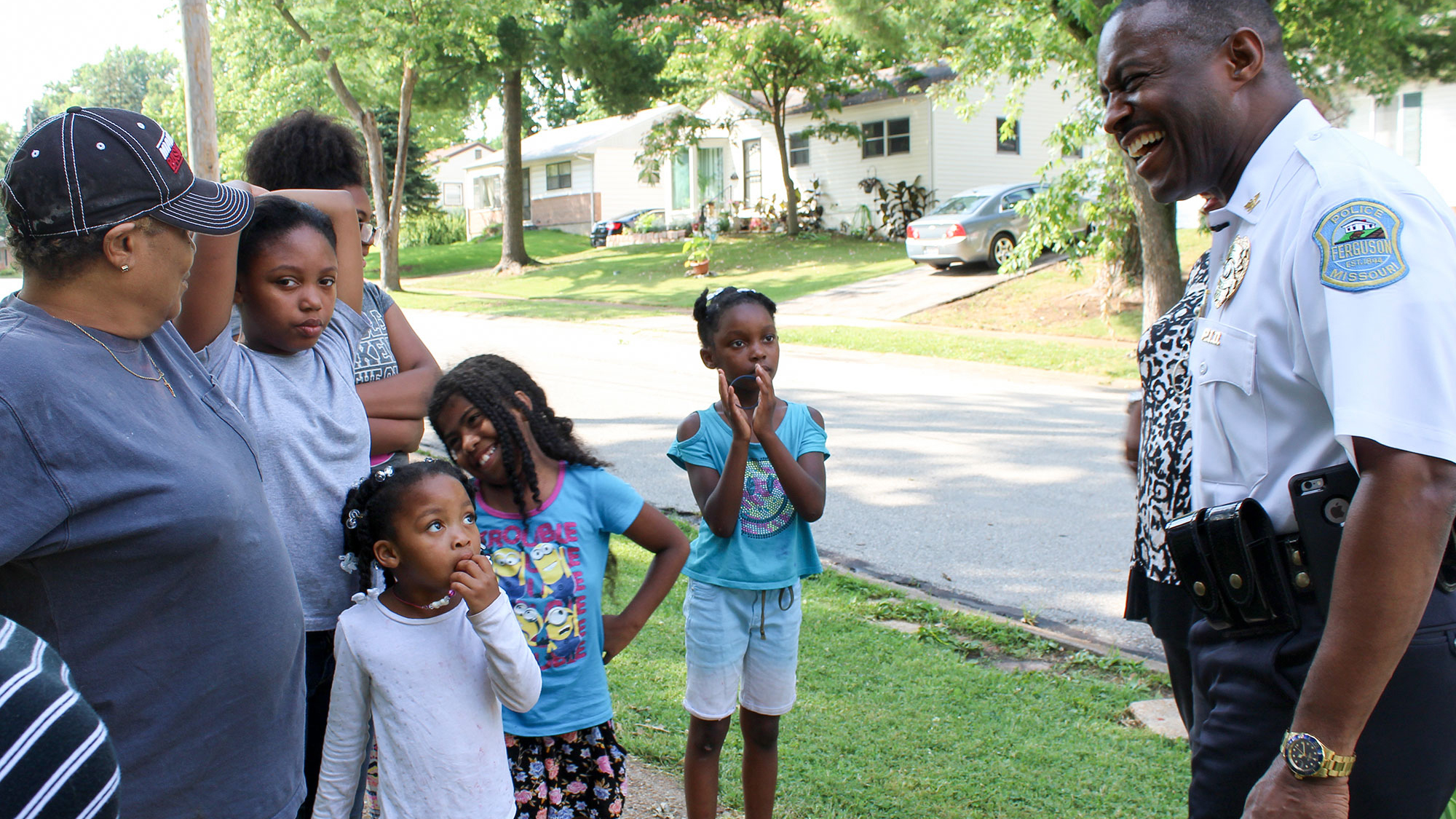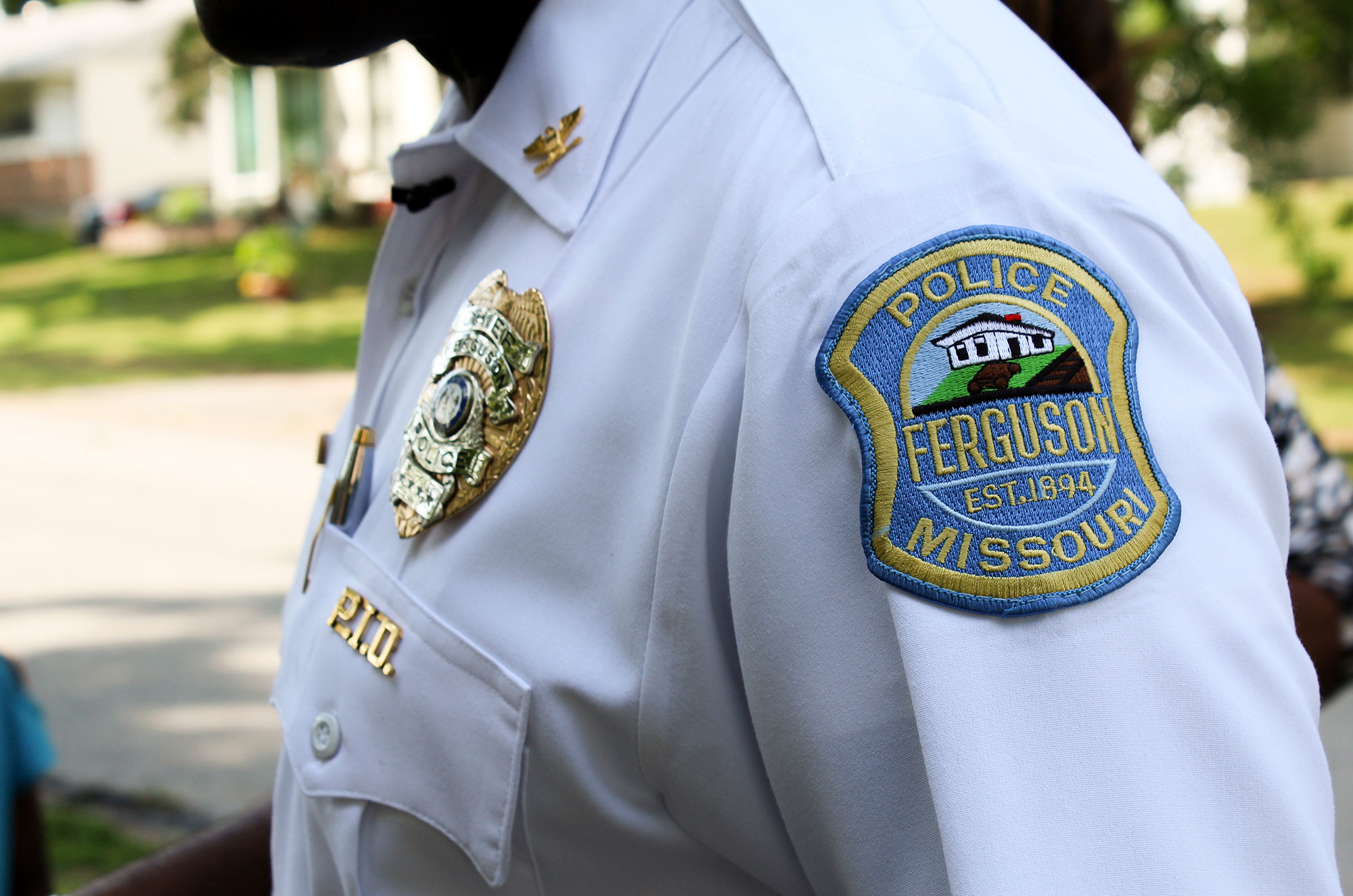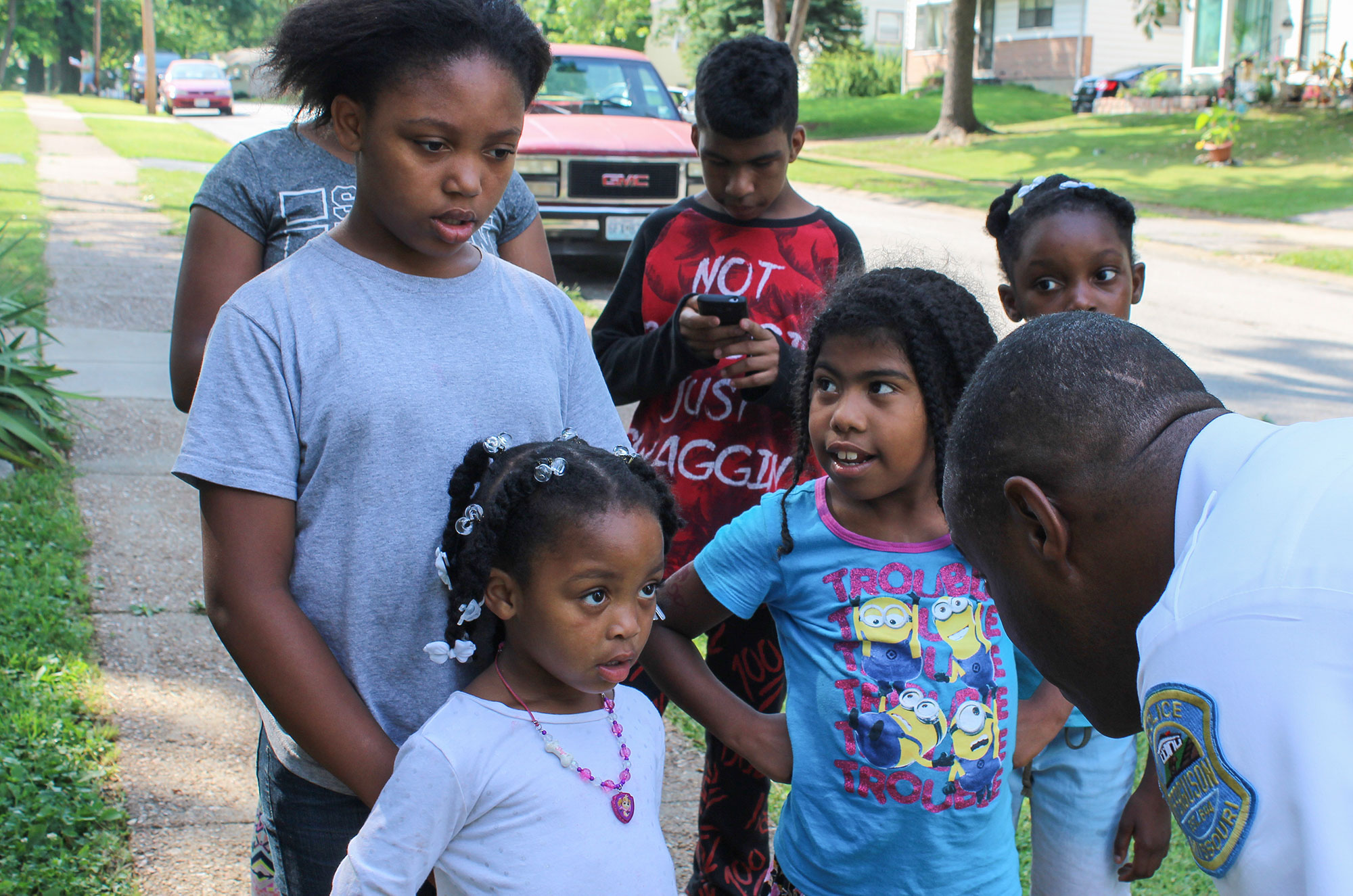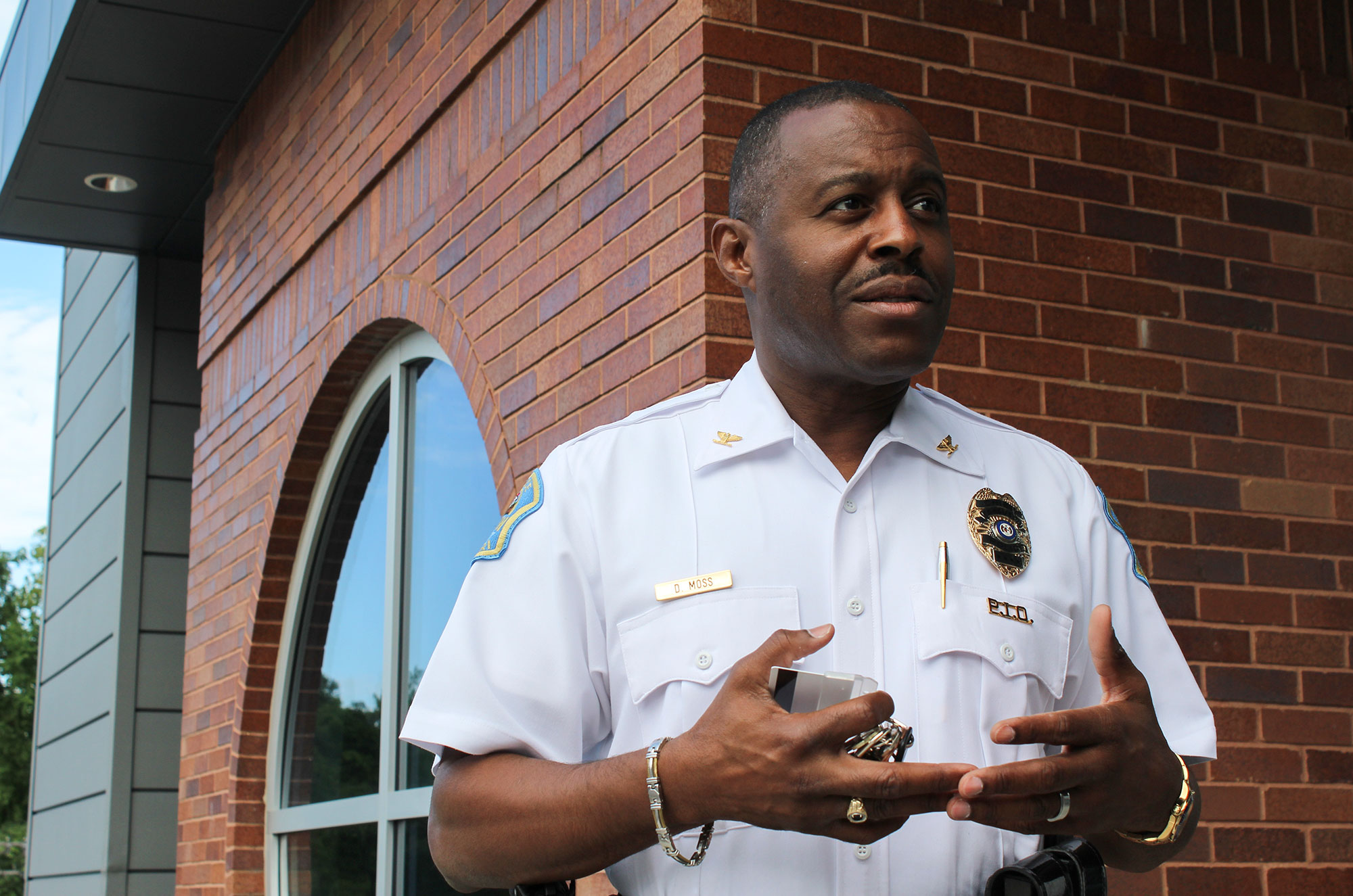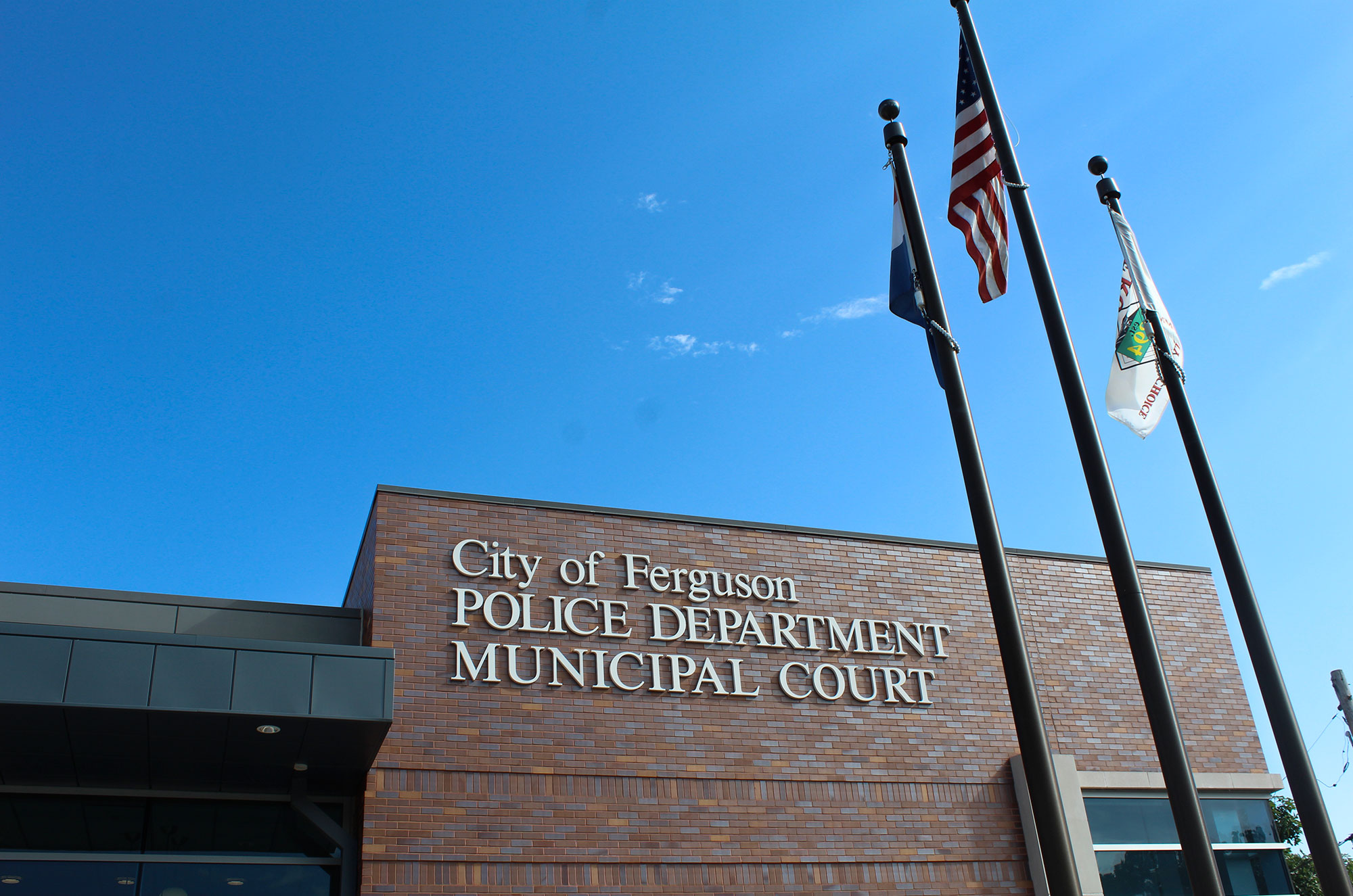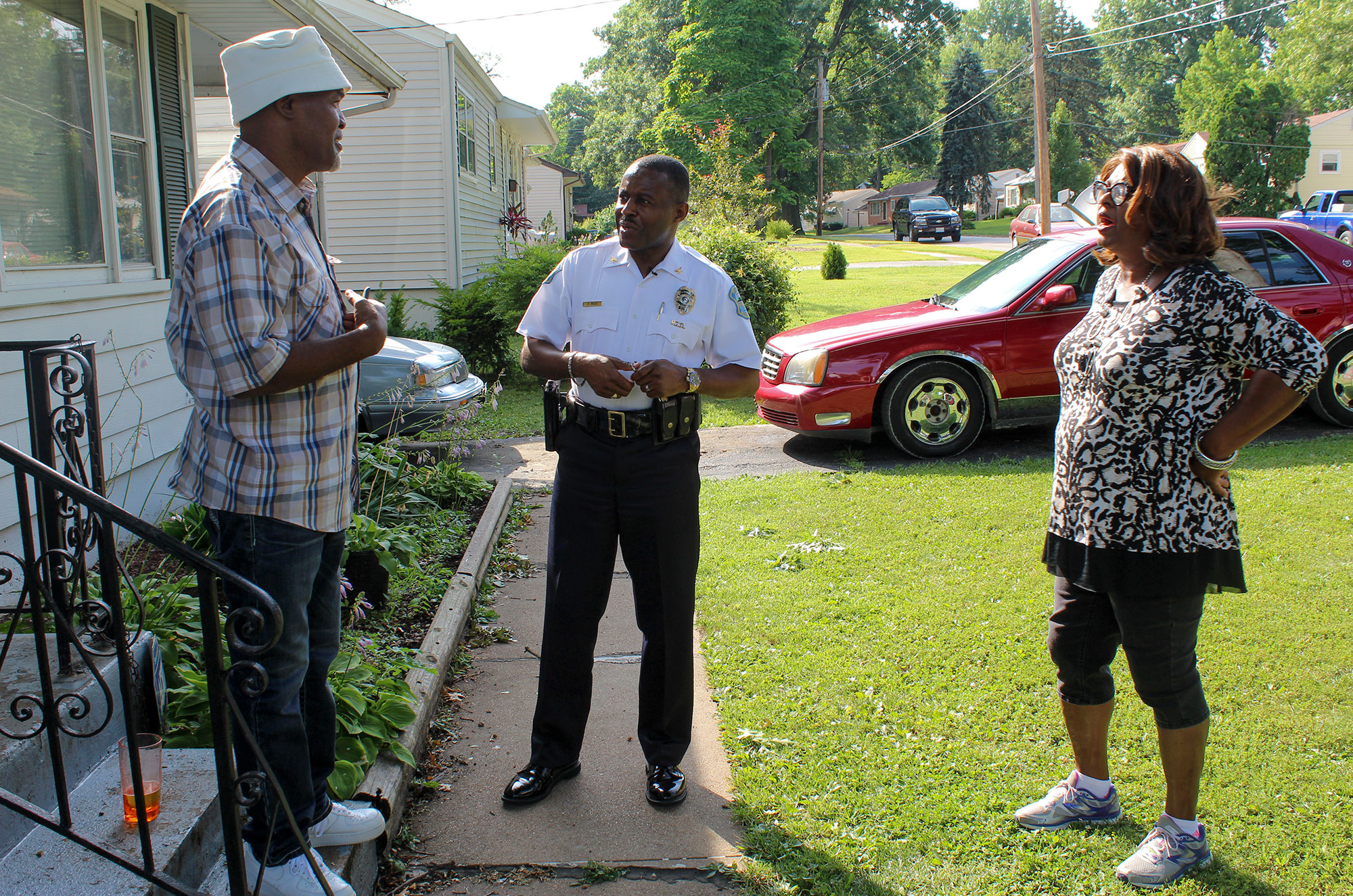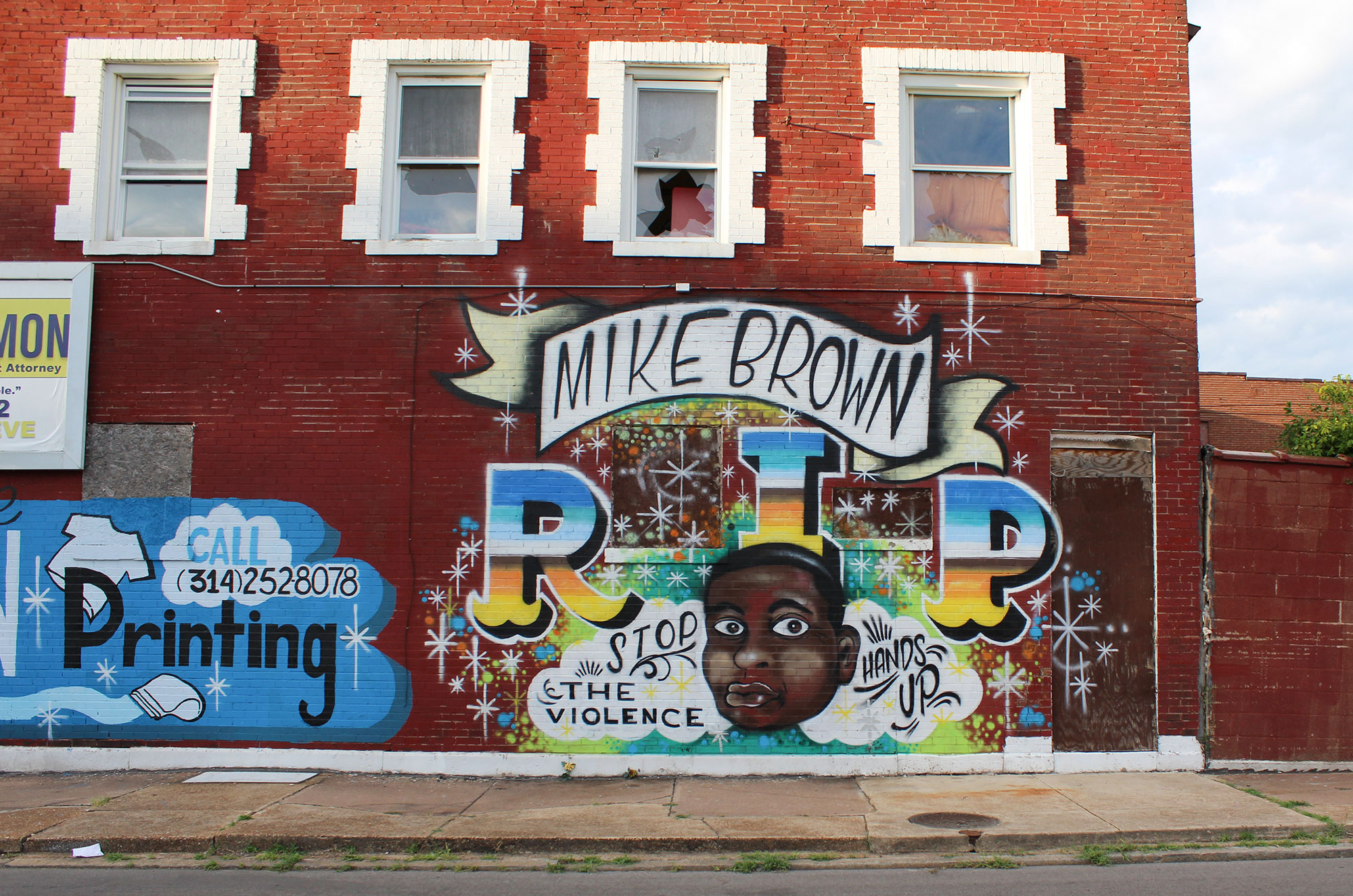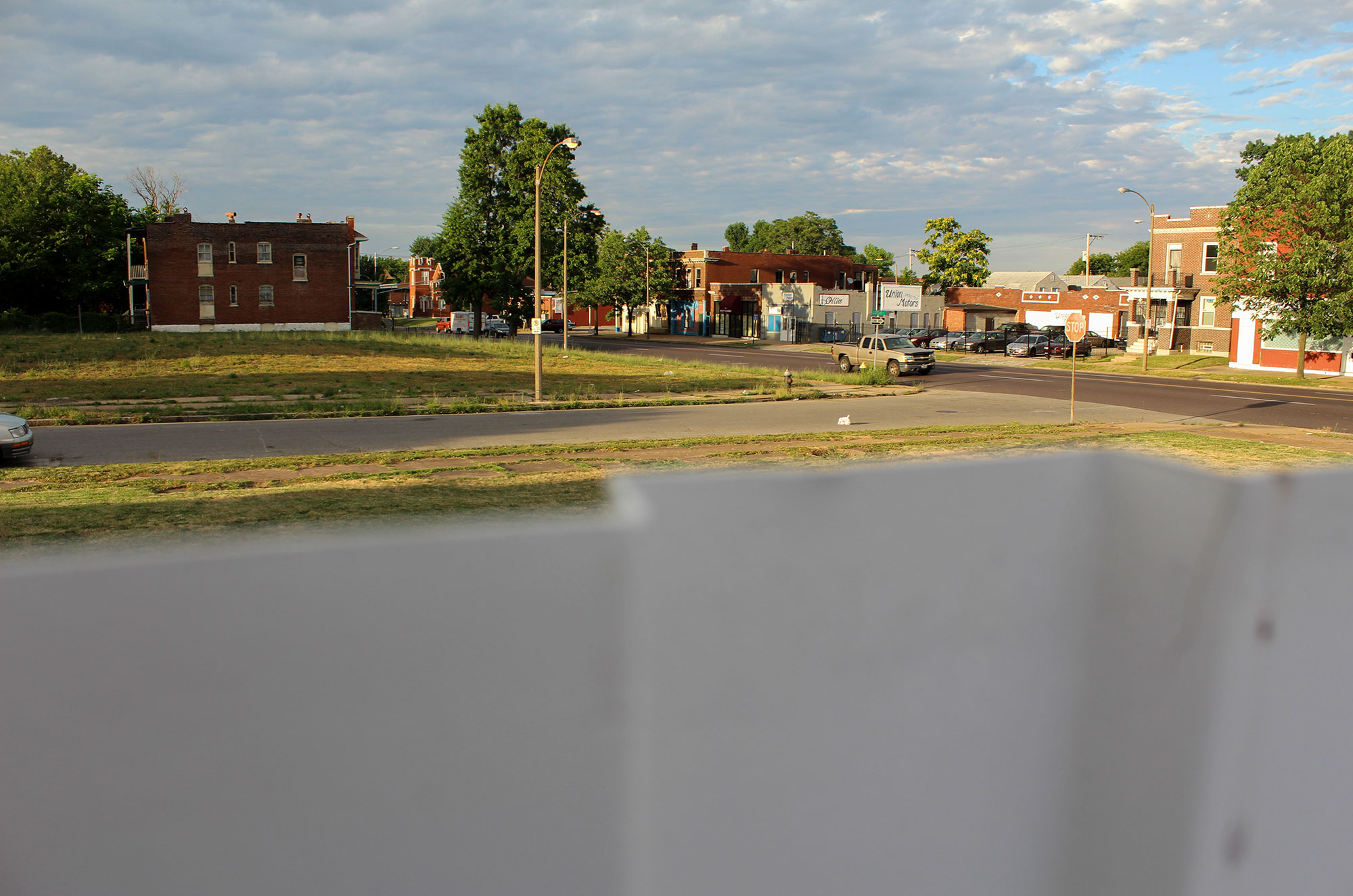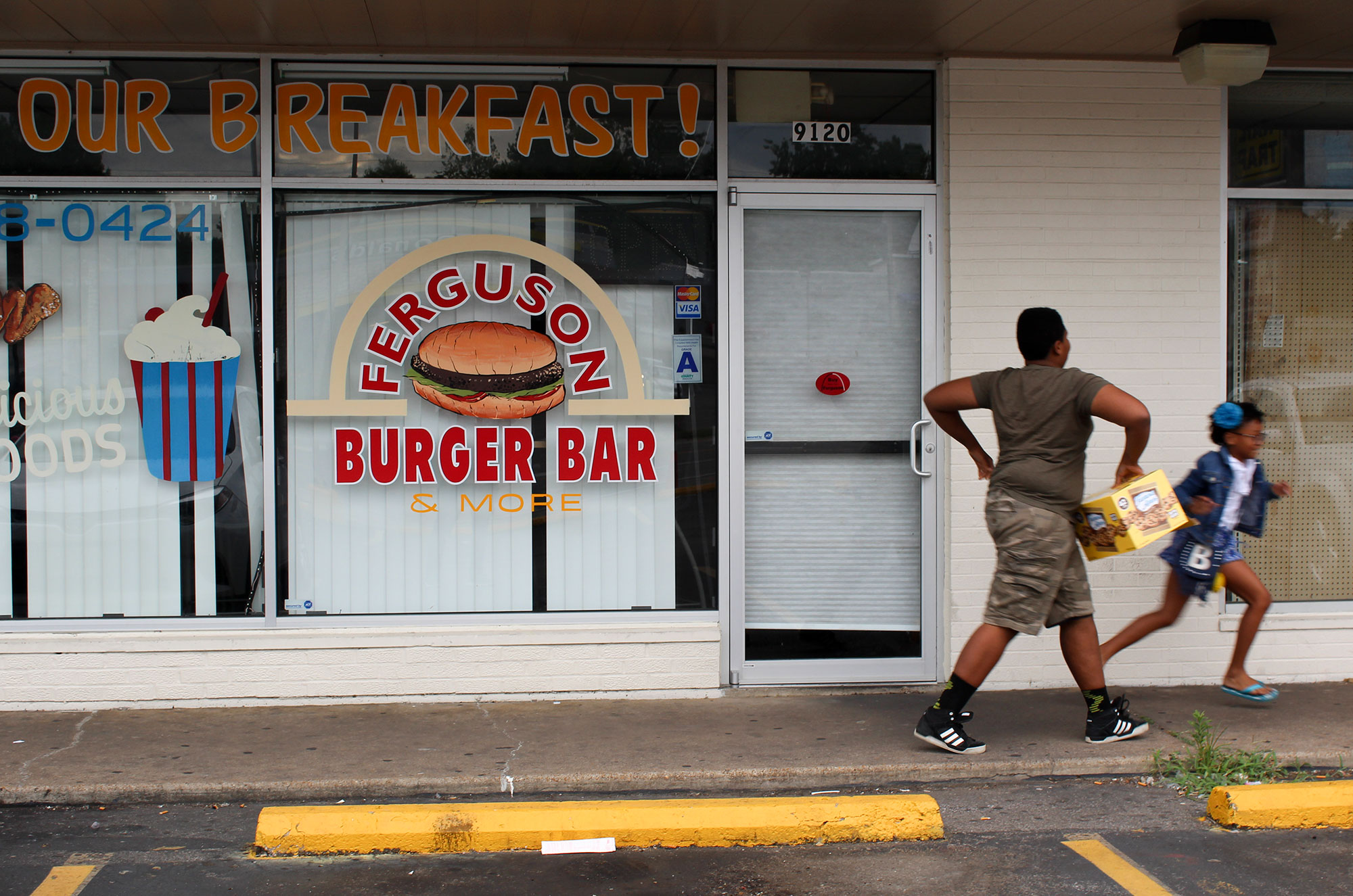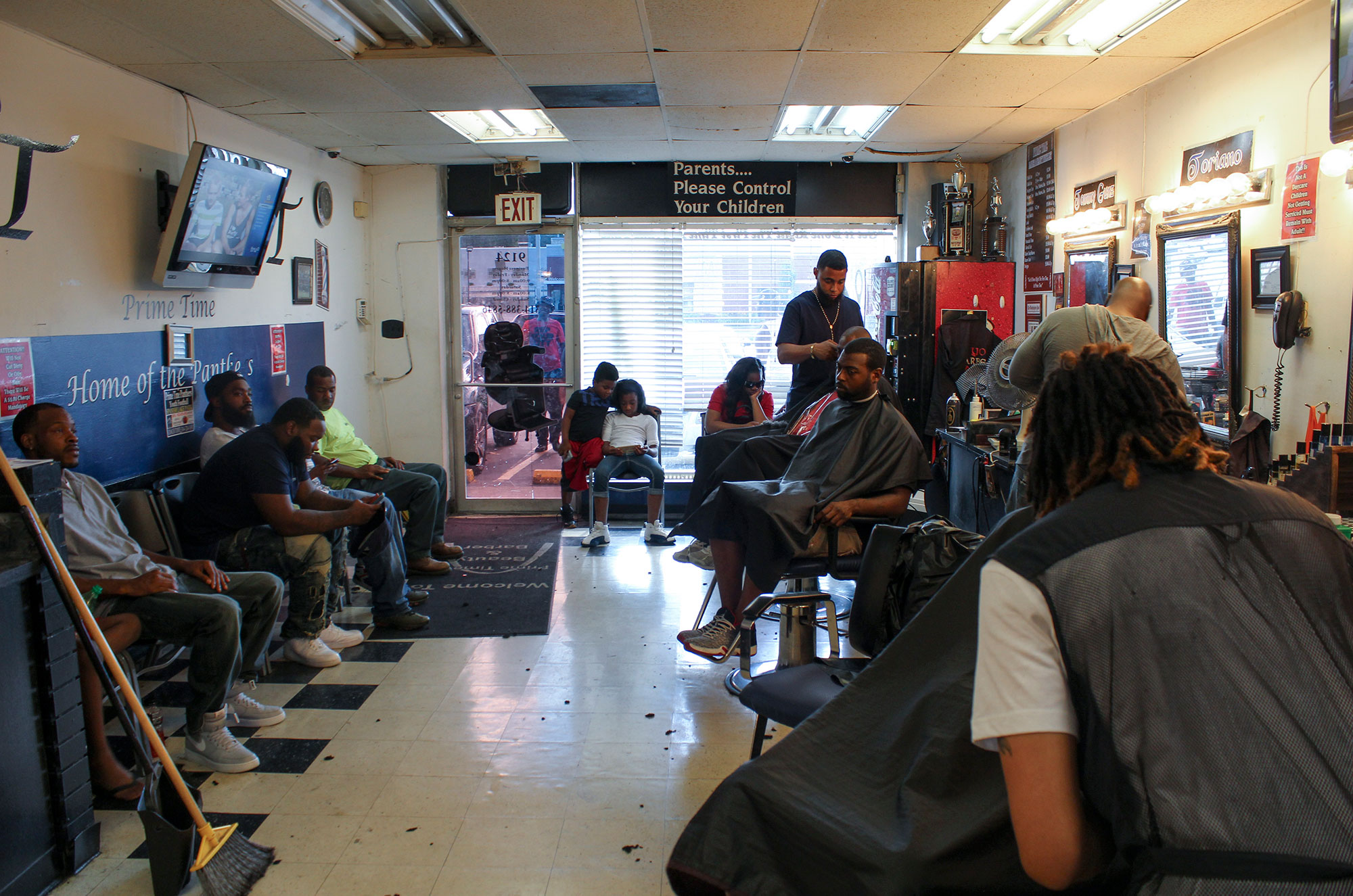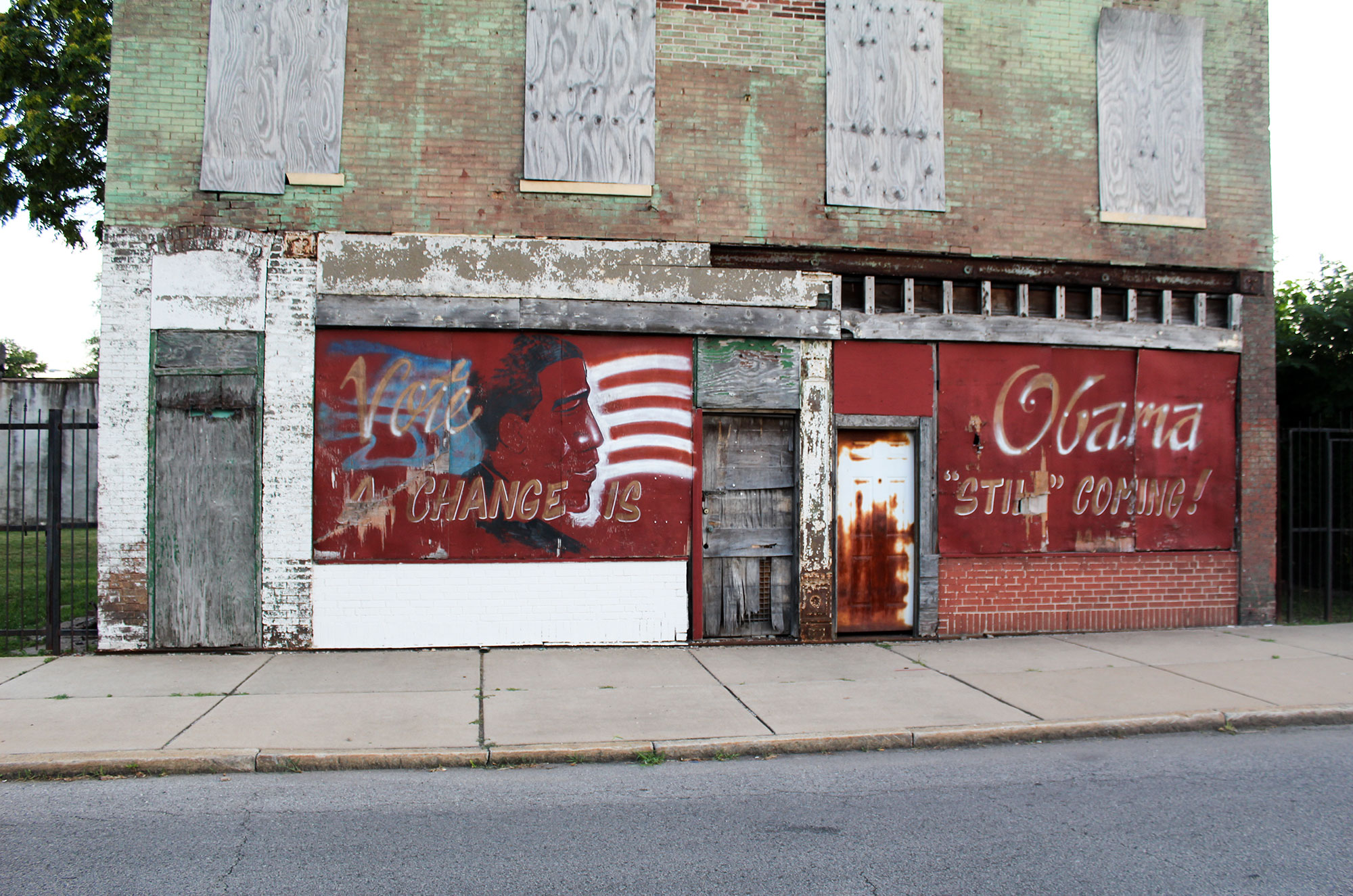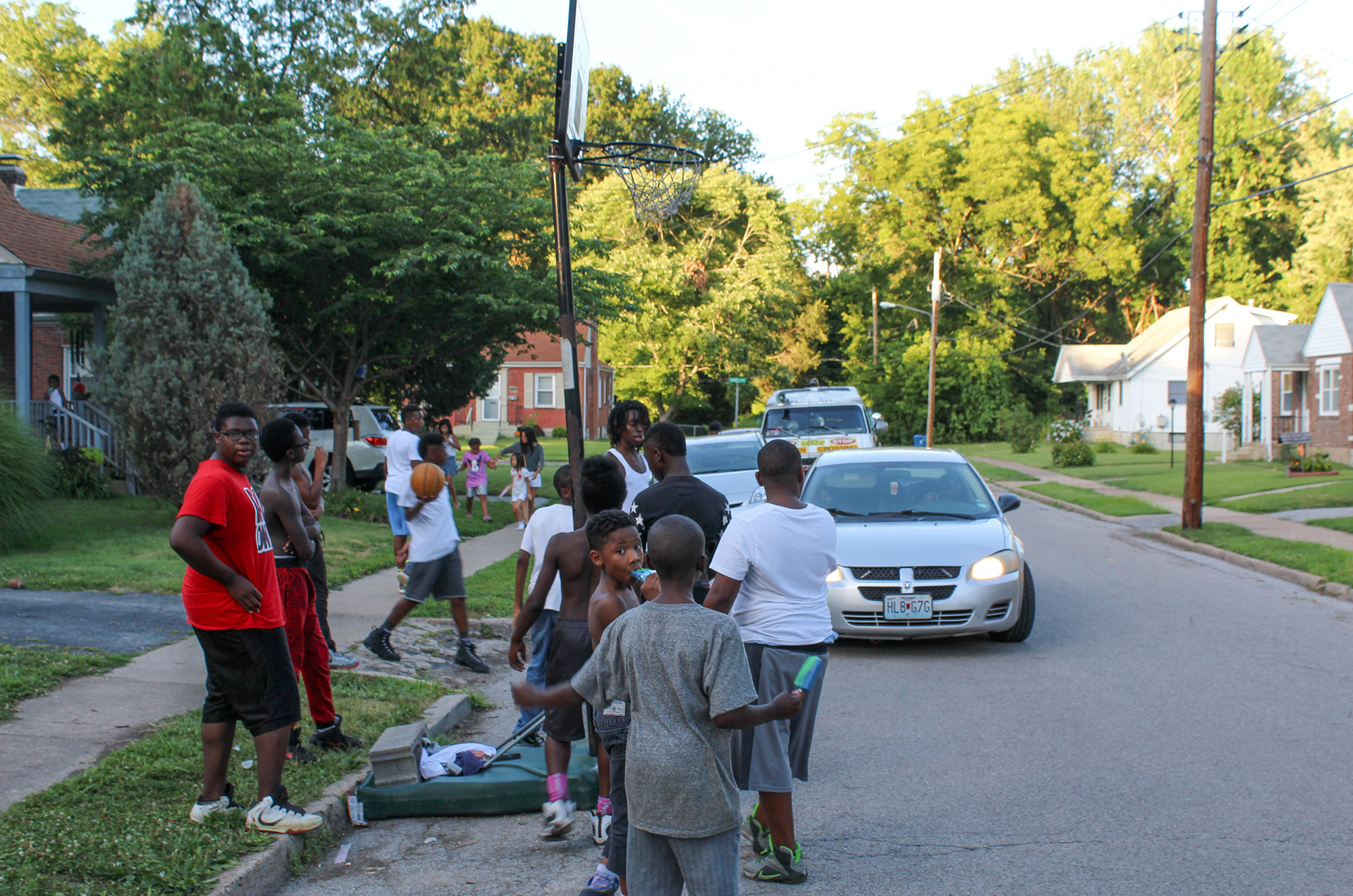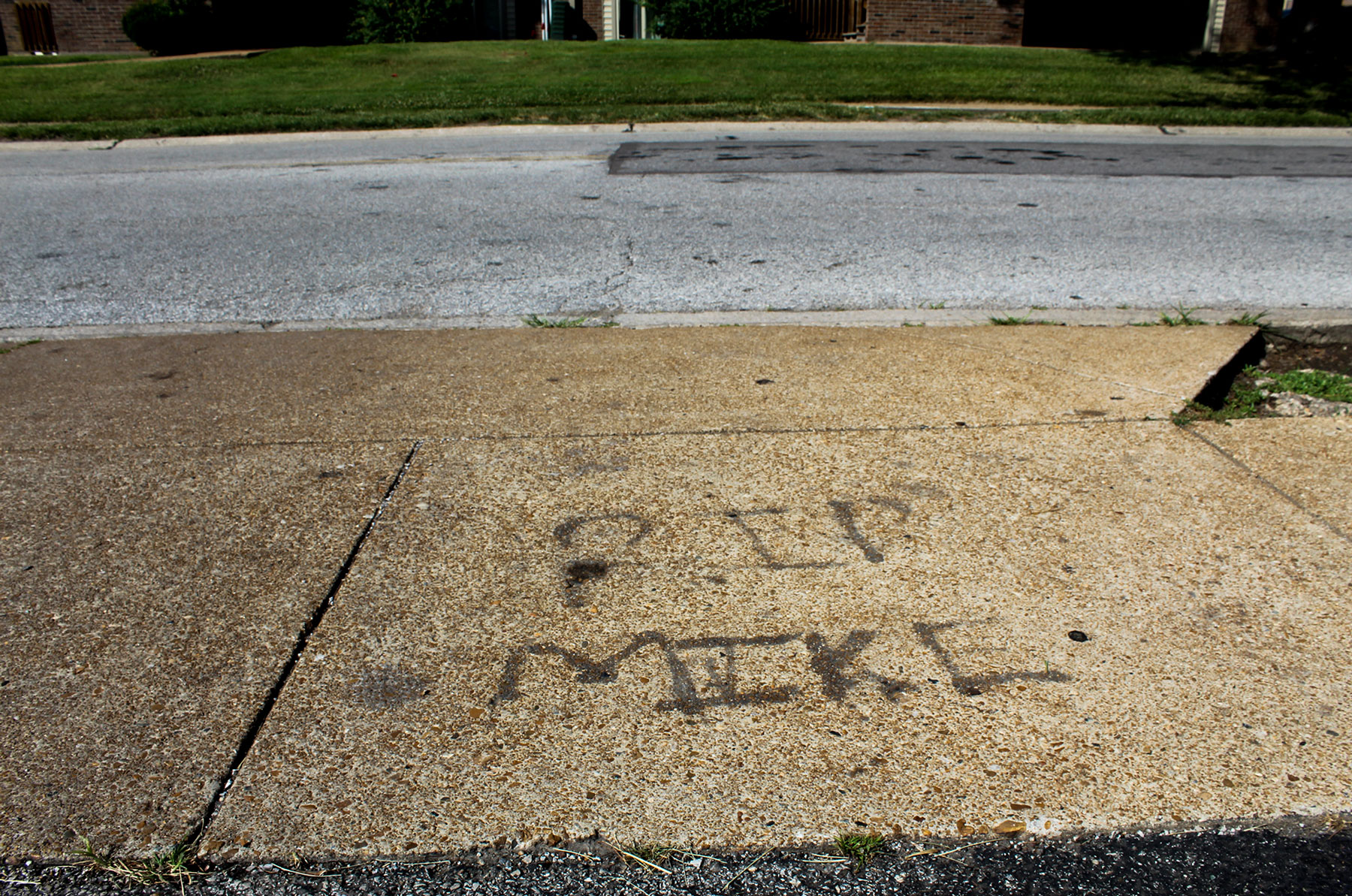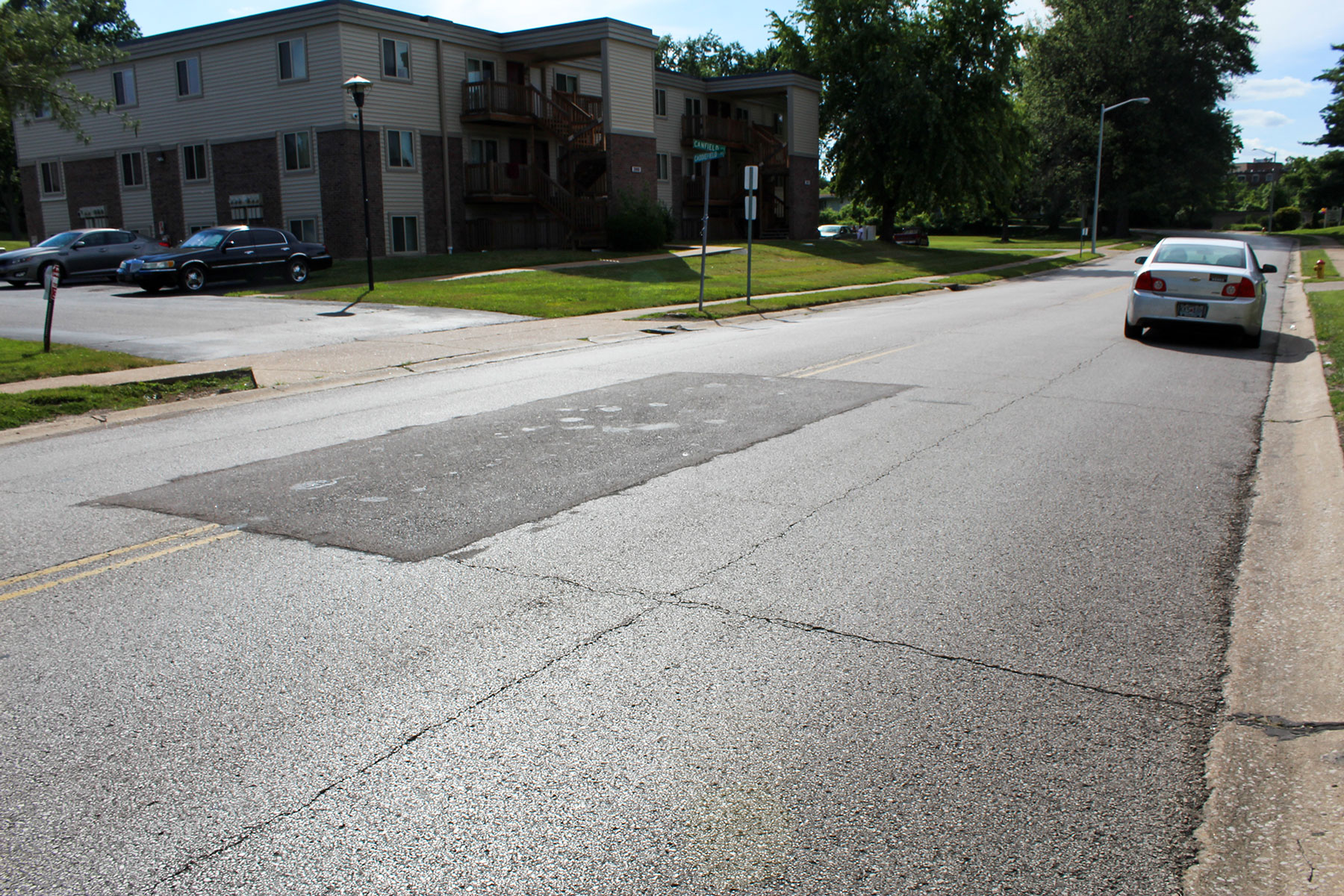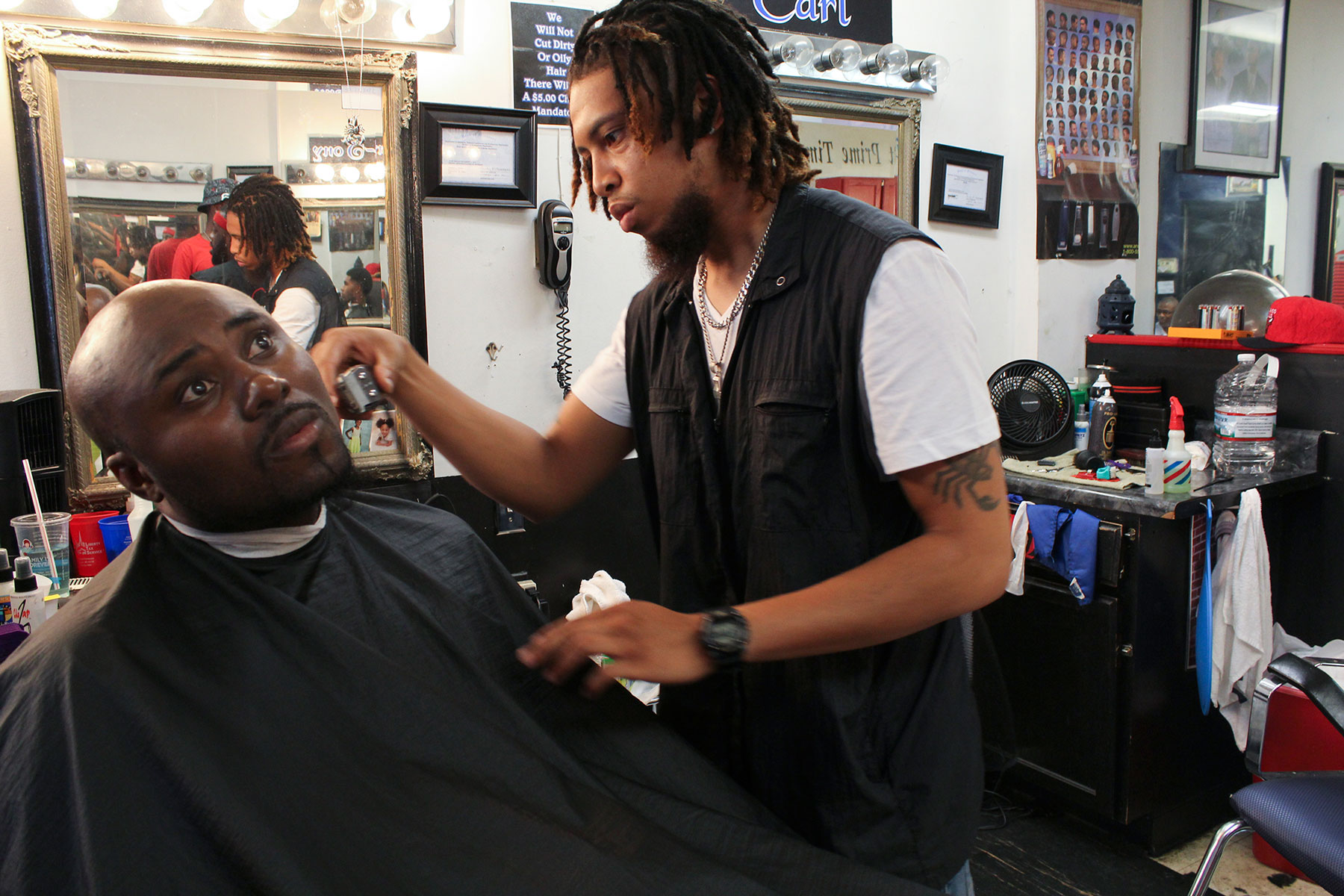Just half a mile from where Brown was shot, Brandon Turner stood outside the Prime Time Barber Shop on West Florissant Avenue, where Brown occasionally came for haircuts.
“Today, it’s a little better. I mean, the police, they’re a little more lax but it’s still the county,” he said, referring to St. Louis County, where Ferguson is located. “But I feel like it’s going to start with police procedure. They can handle us any type of way they want right now, and people aren’t standing for that anymore.”
Turner said police in Ferguson need more training. “They get out of the car and their hands are automatically on their holster. What’s that all about? I’m a person too,” Turner said.
Alan Eickhoff, Ferguson’s assistant police chief, had been in his job just five days when Michael Brown was killed.
“The one thing I saw when I came here from talking to residents during the protests and after the protests is that our officers need involvement in the community. … That’s in the schools and it’s in the subdivisions,” he said. “To get out and meet people, you got to step out of the car and talk to the people.”
Moss, he said, uses social media to reach out to the community – something the department had never done. “We had zero social media with this police department. We have to reach out to where the young people are,” Eickhoff said.
Bell and Jones are two outspoken critics of city government.
“I just looked at it as an opportunity as a call to action,” Bell said. “What I hope to see is that Ferguson sets the standard for police reform, court reform and community engagement.”
For Bell, the shooting of Brown highlighted the lack of African-American representation among police officials and local government officials in predominantly black communities.
“We can’t deny the fact that often tragedies are the catalyst for change,” Bell said. “When we talk about tensions between law enforcement and African-Americans, young poor people in general, what I would say is that we have to look at these issues in a manner that will effectuate change. Far too often, what happens is that if someone complains or protests or demonstrates, they’ll be pacified, but not in a manner that’s sustainable.”
